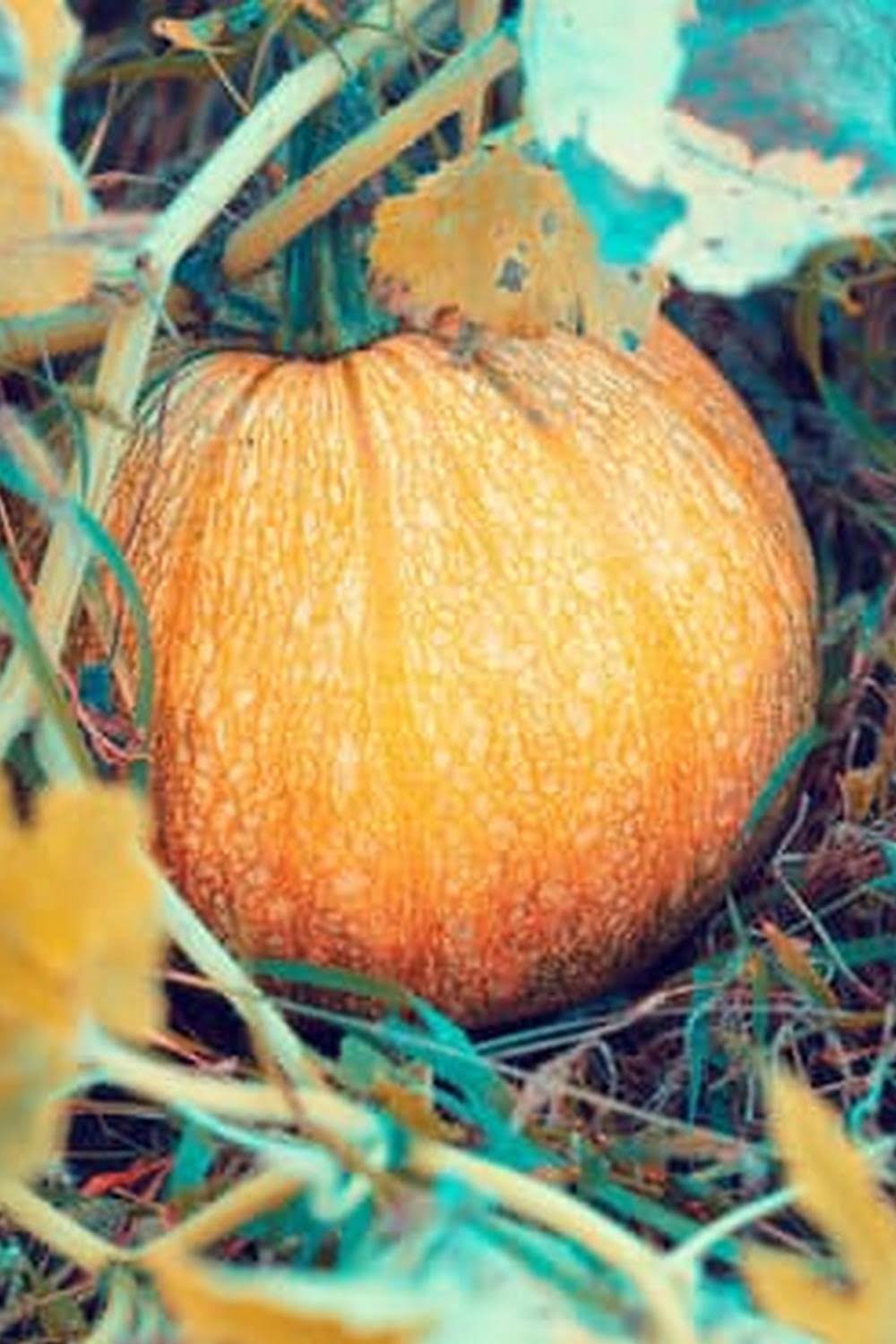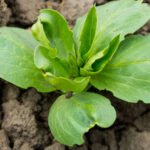Are you looking to extend your gardening season into the colder months? If so, you’ll need to know the best vegetables for cold weather gardening. Cold weather gardening involves growing vegetables that can thrive in cooler temperatures, allowing you to continue your garden harvest even as the temperature drops. Choosing the right vegetables for cold weather gardening is crucial for a successful and bountiful harvest.
Cold weather gardening offers several benefits for gardeners. It can extend the growing season, providing fresh produce well into the fall and even winter months. Additionally, some vegetables actually become sweeter after being exposed to cooler temperatures, enhancing their flavor. With the right techniques and care, cold weather gardening can be a rewarding experience for any gardener.
In this article, we will explore the concept of cold weather gardening and its importance in choosing suitable vegetables for this unique type of gardening. We will also discuss the benefits of cold weather gardening and provide tips on best practices, selecting the right vegetables, planting and care instructions, protecting your garden from environmental challenges, harvesting and storage techniques, as well as success stories from experienced gardeners who have achieved great results with cold weather gardening.
Whether you’re new to cold weather gardening or looking to expand your knowledge on this topic, this article will provide valuable insights to help you make the most of your cold weather vegetable garden.
Benefits of Cold Weather Gardening
Extended Growing Season
One of the major benefits of cold weather gardening is that it extends the growing season for vegetables. While traditional gardening may be limited to the spring and summer months, cold weather gardening allows for planting and harvesting to continue well into the fall and even winter months. This means that you can enjoy a longer period of fresh produce from your garden, providing an abundant supply of homegrown vegetables for your family.
Nutrient-Rich Crops
Another advantage of growing vegetables in cold weather is that many crops actually become sweeter and more nutrient-rich when exposed to cool temperatures. This is especially true for certain root vegetables such as carrots, beets, and turnips. The chilly conditions cause these plants to produce more sugars as a natural antifreeze mechanism, resulting in tastier and healthier harvests.
Natural Pest Control
Cold weather gardening also offers natural pest control benefits. Many pests that plague gardens during warmer months are less active or dormant in colder temperatures, reducing the likelihood of infestations and plant damage. This means less reliance on chemical pesticides and a more eco-friendly approach to keeping your garden healthy. By choosing the best vegetables for cold weather gardening, you can take advantage of these benefits to enjoy a successful and productive garden throughout the year.
Best Practices for Cold Weather Gardening
When it comes to cold weather gardening, preparation is key. In order to ensure successful vegetable growth during the colder months, it’s important to take certain precautions and plan ahead. One of the best practices for cold weather gardening is to start with the right soil. Cold weather vegetables thrive in well-draining soil that has been amended with organic matter, such as compost or aged manure. This will help retain moisture and provide essential nutrients to the plants.
Another important tip for cold weather gardening is to protect your plants from harsh weather conditions. This can be done by using row covers, cloches, or cold frames to shield the plants from frost and freezing temperatures. Additionally, planting vegetables in raised beds can help improve drainage and warm up the soil faster in the spring. Mulching around the base of plants can also help regulate soil temperature and reduce moisture loss.
In addition to these tips, it’s essential to pay attention to watering and fertilizing practices during cold weather gardening. Since evaporation is slower in colder temperatures, it’s important not to overwater your plants. A good rule of thumb is to water deeply but less frequently.
Fertilizing should also be done sparingly, as excessive nutrients can harm cold weather vegetables. By following these best practices for cold weather gardening, you can ensure that your plants have the best chance of thriving despite the challenging conditions.
Selecting the Right Vegetables
When it comes to cold weather gardening, selecting the right vegetables is essential for a successful yield. Not all vegetables are suitable for growing in colder climates, so choosing the best varieties is crucial. The best vegetables for cold weather gardening are those that can withstand lower temperatures, frost, and even snow. Here are some of the top vegetables that thrive in cold weather:
- Carrots: Carrots are a great option for cold weather gardening as they can tolerate frost and even develop sweeter flavors in cooler temperatures.
- Spinach: This leafy green vegetable is known for its ability to withstand chilly weather and can be harvested throughout the winter months.
- Kale: Kale is a hardy vegetable that actually becomes tastier after being exposed to frost, making it an excellent choice for cold weather gardening.
- Brussels Sprouts: These vegetables are perfect for colder climates and can be harvested well into the winter season.
- Broccoli: Broccoli is another cold-tolerant crop that thrives in chilly temperatures, making it an ideal choice for your winter garden.
When choosing the most suitable varieties of these vegetables for cold weather gardening, look for ones specifically labeled as “cold-hardy” or “frost-resistant”. These varieties have been bred to withstand lower temperatures and will perform better in colder climates. Additionally, consider selecting quick-maturing varieties to ensure a successful harvest before the harshest winter conditions set in.
Ultimately, by selecting the best vegetables for cold weather gardening and choosing the most suitable varieties for your climate, you can set yourself up for a successful and productive winter garden. With proper care and attention, you can enjoy a bountiful harvest of fresh, homegrown produce even during the coldest months of the year.
Planting and Care Instructions
When it comes to cold weather gardening, proper planting and care are essential for maximizing the growth and yield of your vegetables. The right techniques can make all the difference in ensuring that your cold weather garden thrives throughout the winter months. Here are some step-by-step guidelines to help you plant, water, and care for your cold weather vegetables:
1. Planting: Start by selecting the best vegetables for cold weather gardening, such as kale, spinach, carrots, and Brussels sprouts. Prepare the soil by incorporating organic matter and fertilizer to provide essential nutrients for the plants. Follow the recommended spacing and depth for each type of vegetable to ensure proper growth.
2. Watering: Cold weather vegetables still need adequate hydration, so be sure to water them consistently. However, be mindful of overwatering, as excess moisture can lead to rot and other issues in colder temperatures. Consider using a moisture meter to monitor soil moisture levels and adjust your watering schedule accordingly.
3. Caring: Keep an eye out for signs of pests and diseases that may affect your cold weather vegetables. Regularly inspect the plants for any issues and take appropriate measures to address them if necessary. Additionally, consider using row covers or cloches to provide extra protection from harsh weather conditions.
| Vegetable | Best Varieties |
|---|---|
| Kale | Dwarf Blue Curled |
| Spinach | Bloomsdale |
| Carrots | Scarlet Nantes |
| Brussels Sprouts | Catskill |
By following these planting and care instructions, you can set yourself up for success in growing cold weather vegetables. With the right approach, you can enjoy a bountiful harvest even during the chilliest months of the year.
Protecting Your Garden
When it comes to cold weather gardening, protecting your garden from frost, snow, and other environmental challenges is crucial for the success of your vegetable crop. There are several methods you can use to ensure that your garden remains healthy and thriving even in challenging weather conditions.
Covering Your Plants
One effective method for protecting your cold weather garden is by covering your plants with row covers or cloches. These coverings help to trap heat and create a warmer microclimate around your plants, shielding them from the harsh effects of frost and cold temperatures. Additionally, using mulch around your plants can also provide insulation and protect their roots from freezing.
Utilizing Cold Frames
Cold frames are another valuable tool for protecting your cold weather garden. These structures act as mini greenhouses, capturing sunlight and heat to create a warm environment for your plants. They are particularly useful for extending the growing season into colder months and providing protection from snow and frost.
Irrigation Techniques
In some cases, utilizing irrigation techniques such as watering your plants before a frost can help protect them by raising the temperature of their leaves. However, it’s important to be cautious with this method as wet foliage can actually increase the likelihood of frost damage.
By implementing these protective measures, you can safeguard your cold weather garden and ensure that your chosen vegetables thrive despite the challenges of colder temperatures.
Harvesting and Storage
When it comes to cold weather gardening, harvesting and proper storage of your vegetables are crucial steps for maximizing their shelf life and enjoying the fruits of your labor for as long as possible. Below is a list of some of the best vegetables for cold weather gardening that can be harvested at the right time and stored properly for long-term enjoyment:
- Carrots
- Beets
- Potatoes
- Brussels sprouts
- Kale
- Turnips
- Cabbage
The timing of harvesting cold weather vegetables is essential to ensure peak flavor and quality. One of the benefits of growing these vegetables in cooler temperatures is that they often develop sweeter flavors and their texture improves after exposure to a light frost.
When harvesting root vegetables such as carrots, beets, and turnips, wait until after the first frost for the best flavor. For leafy greens like kale and Brussels sprouts, you can continue to harvest them well into the winter months.
Proper storage is also key in preserving the freshness of your cold weather vegetables. Consider storing root vegetables like carrots and beets in a cool, dark place with high humidity to prevent them from drying out. Potatoes should also be stored in a cool, dark location but should not be placed near onions or apples as they release gases that can cause potatoes to spoil more quickly.
Leafy greens such as kale and cabbage can be stored in the refrigerator crisper drawer for up to several weeks when properly wrapped in plastic to maintain moisture levels. By taking these precautions when harvesting and storing your cold weather vegetables, you can prolong their shelf life and enjoy them long after they have been harvested from your garden.
Success Stories
In conclusion, cold weather gardening can be a rewarding and fruitful experience, especially when the right vegetables are chosen and proper care is given to the garden. By selecting the best vegetables for cold weather gardening, such as kale, Brussels sprouts, and carrots, gardeners can enjoy an extended growing season and a bountiful harvest even in cooler temperatures.
The benefits of cold weather gardening are numerous, including the opportunity to enjoy fresh produce well into the winter months and the satisfaction of successfully tending to a garden in challenging conditions.
For those considering embarking on a cold weather gardening journey, it’s important to remember that success is possible with the right preparation and techniques. By following best practices for cold weather gardening, such as providing adequate protection from frost and snow, carefully selecting appropriate vegetable varieties, and implementing proper planting and care instructions, gardeners can set themselves up for a successful growing season.
Furthermore, hearing about real-life success stories from fellow gardeners who have thrived in cold weather conditions can provide inspiration and valuable insights. These stories serve as a reminder that with dedication and knowledge of the best vegetables for cold weather gardening, it is indeed possible to create a thriving garden even in less-than-ideal temperatures.
With careful planning and attention to detail, anyone can experience great results with cold weather gardening and savor the delicious rewards of growing the best vegetables for these conditions.
Frequently Asked Questions
What Vegetables Can You Grow in a Winter Garden?
In a winter garden, there are several vegetables that can thrive in the colder months. Some common options include carrots, kale, spinach, lettuce, broccoli, Brussels sprouts, and radishes. These vegetables can withstand the lower temperatures and provide a bountiful harvest during the winter season.
What Is the Fastest Growing Winter Vegetable?
The fastest-growing winter vegetable is typically arugula. This leafy green can be ready to harvest in as little as 3-4 weeks after planting. Arugula thrives in cooler temperatures and can be grown in containers or directly in the ground, making it a popular choice for winter gardens.
What Is the Lowest Temperature Vegetable Plants Can Tolerate?
Vegetable plants vary in their tolerance to low temperatures, but generally speaking, most vegetable plants can tolerate temperatures as low as 28-32°F for short periods with some frost protection. Hardy vegetables like kale, cabbage, and Brussels sprouts can even withstand temperatures as low as 20°F for an extended period with proper insulation or coverings to protect them from freezing.
Overall, it’s important to research the specific cold tolerance of each vegetable before planting them in your winter garden.

If you’re looking to get into vegetable gardening, or are just looking for some tips on how to make your current garden better, then you’ve come to the right place! My name is Ethel and I have been gardening for years. In this blog, I’m going to share with you some of my best tips on how to create a successful vegetable garden.





